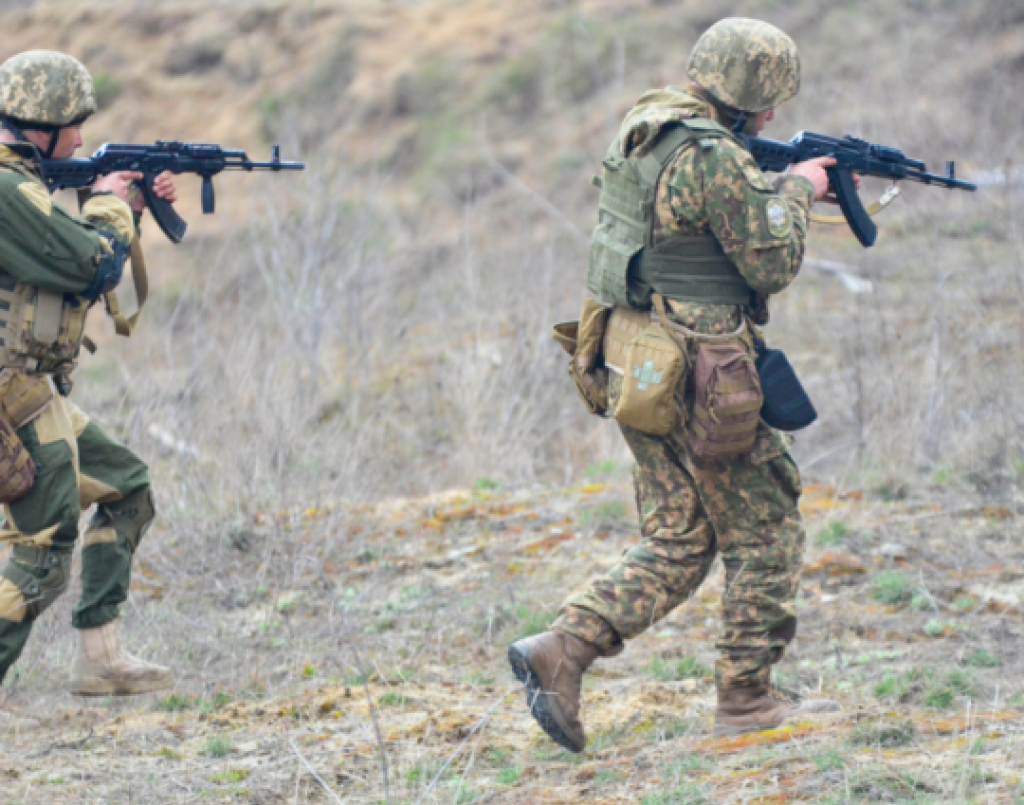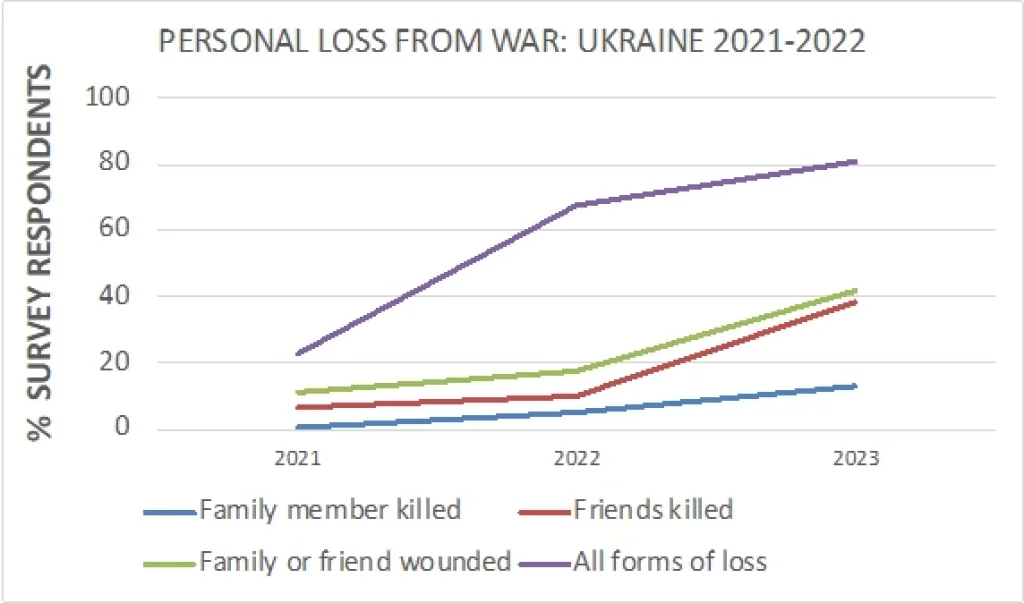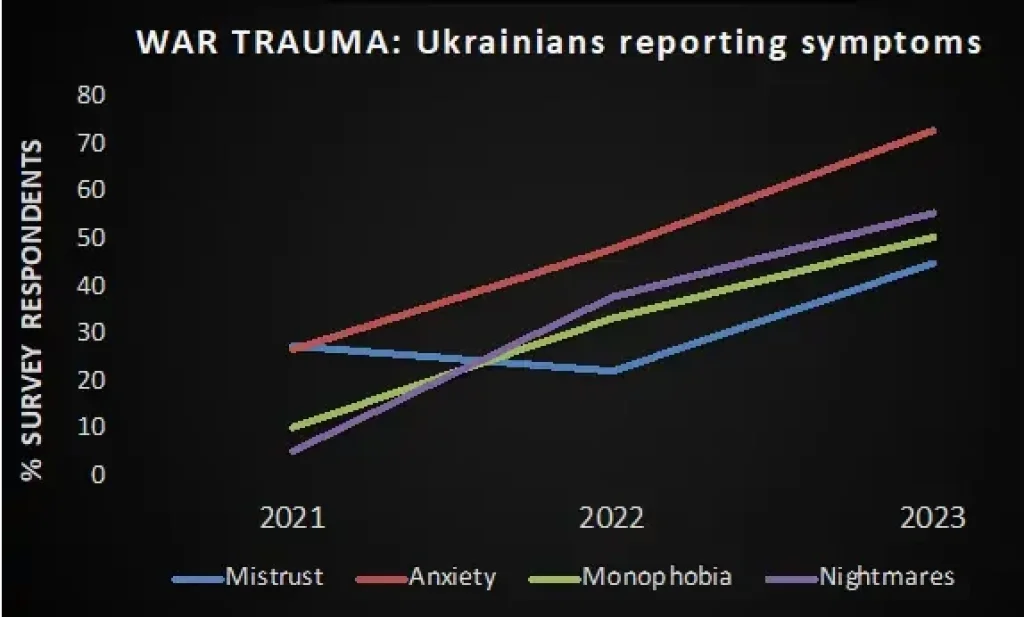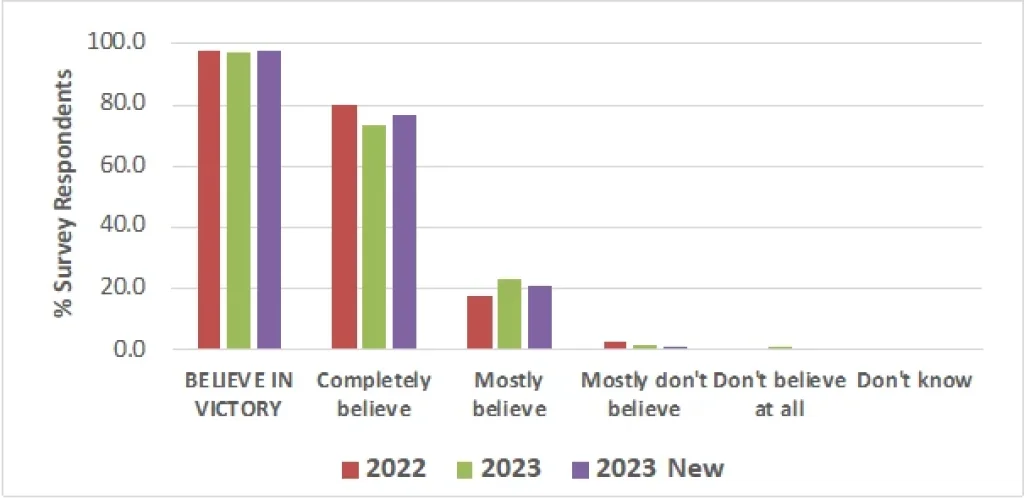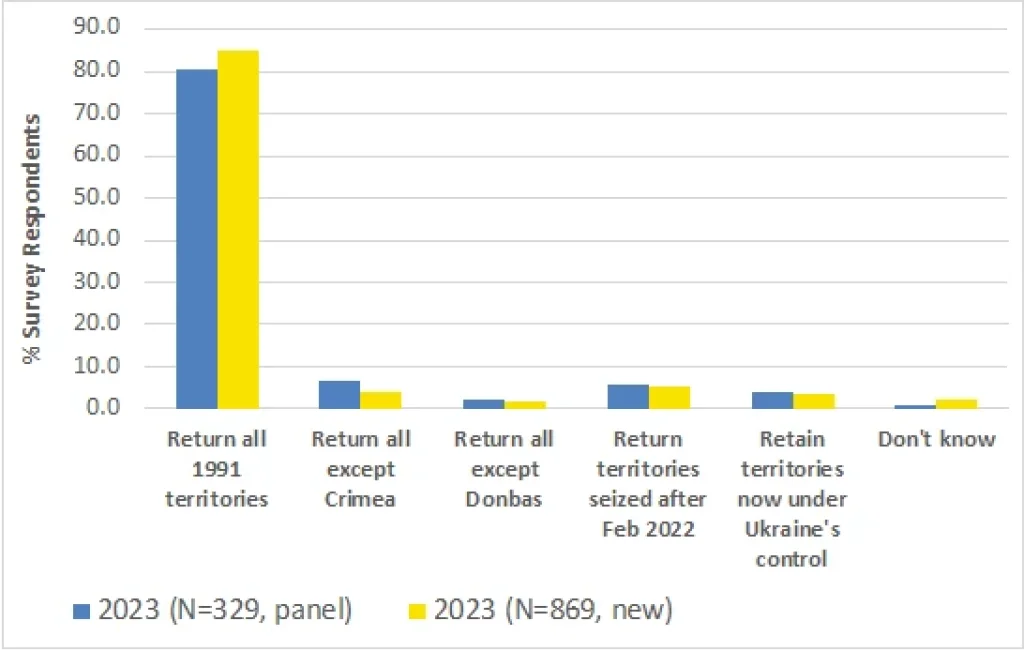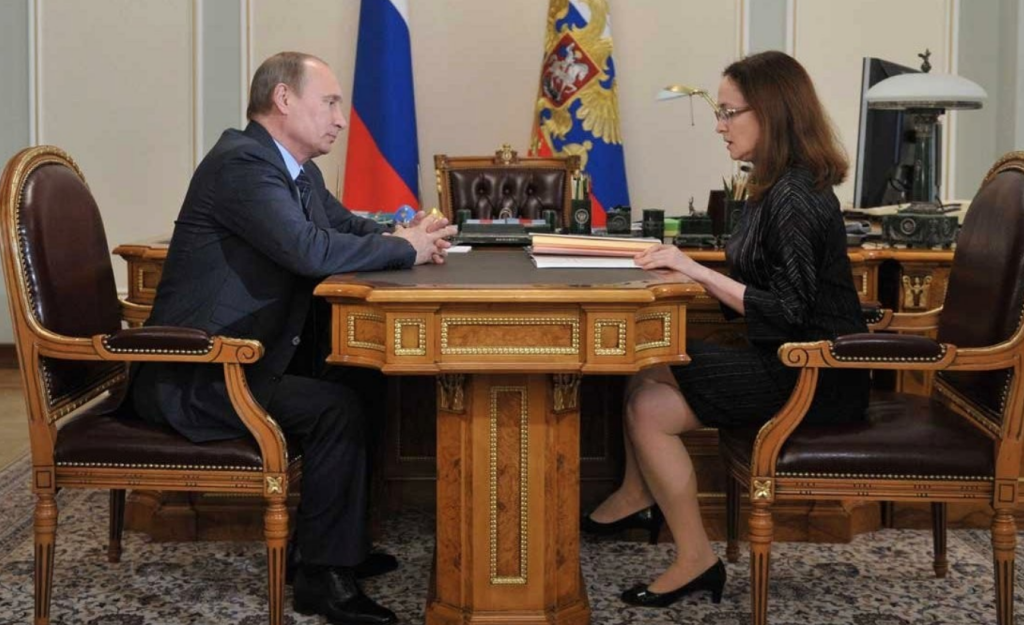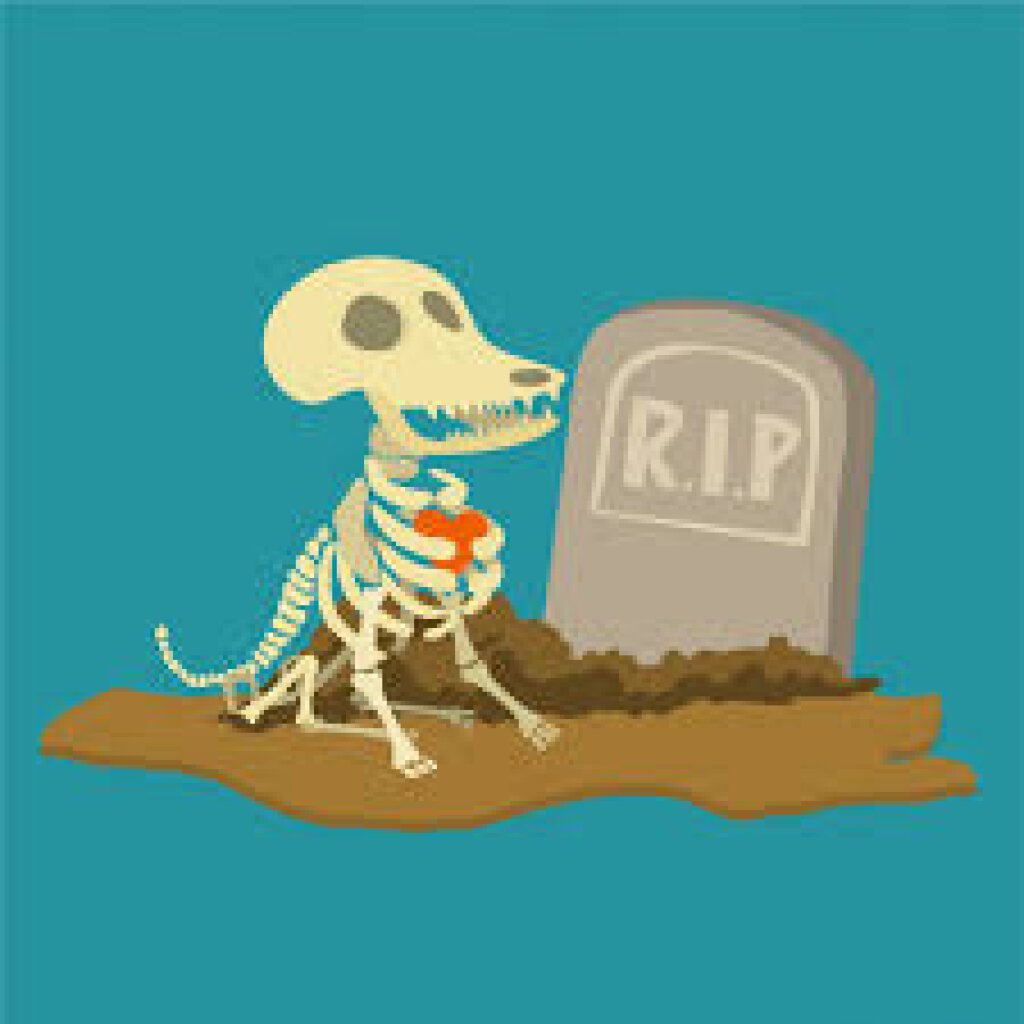This is Part I in a two-part series. Part II will follow tomorrow, 12/8.
This piece originally appears on PONARS Eurasia on 11/14.
Mikhail Alexseev is a Professor of Political Science at San Diego State University.
Serhii Dembitskyi is Deputy Director of the Institute of Sociology of the National Academy of Sciences of Ukraine.
Not only does the overwhelming majority of Ukrainians remain resolute in its commitment to driving Russia out of Ukraine’s internationally recognized territory, but this commitment is strongly fused with a determination to be a healthy, thriving democracy and to honor and avenge their devastating shared losses and sacrifices. These are two of the main findings from two new surveys, in addition to focus groups, conducted across Ukraine in June-September 2023.
The first survey is a longitudinal study of 329 respondents, broadly representative of Ukraine’s population in territories under Kyiv’s control, who were first interviewed as part of the Ukraine National Academy of Sciences Institute of Sociology’s larger annual monitoring survey in November 2021. They have since been reinterviewed in June-July 2022 and in the second half of June 2023. The second is a survey of 869 new respondents polled in late June 2023. Our four focus groups, conducted in mid-September 2023, each had eight participants and represented Ukraine’s macro-regions: Center (Kyiv and Kyiv province); West (Lviv and Ivano-Frankivs’k); East (Kharkiv and Donetsk); and South (Odesa and Mykolaiv).
Our 2022 and 2023 surveys reflect changes in territorial control and population movements in Ukraine during wartime, making them valuable for assessing the state of public opinion in territories governed by Kyiv, but not in territories under Russian occupation, in the contested settlements along the line of high-intensity fighting, or among Ukrainians who have fled to Russia or other countries. Our research design, data, and methods of analysis, however, mitigate the effects of changes in the regional composition of the sample and some other problems typical of wartime polling.
Mounting war toll
Ukraine is in a long, brutal war. Our survey data show deep, widespread, and growing personal loss and trauma (see Figure 1). The number of Ukrainians reporting family members and friends killed or wounded; having lost jobs, homes or other property; or having to flee the war zone rose from 20 percent to 80 percent between November 2021 and June 2023. Particularly notable in the last year is the increase in the number of people reporting the death or injury of their nearest and dearest (see Figure 1). All year-on-year increases are statistically significant, meaning they are unlikely to have occurred due to chance or individual inconsistencies.
We also observe a stunning rise in the number of Ukrainians reporting typical symptoms of post-traumatic stress disorder (PTSD), particularly anxiety, war-related nightmares, and fear of being alone (monophobia). Alarmingly, all these symptoms have increased with each successive survey wave. The tendency to mistrust everyone—which declined in the first four months after the mass invasion, possibly reflecting unprecedented rallying and solidarity—had also increased considerably by June 2023 (see Figure 2).
Victory commitment and meaning
Despite mounting loss and trauma, Ukrainians overwhelmingly continue to believe in victory over Russia and remain determined to restore Ukraine’s full territorial integrity. As Figure 3 shows, about 97 percent of people in our tracking poll, as well as in the new control poll of June 2023, said they believed in victory. The 6.5 percentage-point shift in the tracking poll from “completely believe” to “mostly believe” between 2022 and 2023 is not statistically significant and is less pronounced (at about two percent) in the June 2023 survey (see Figure 3).
Based on the larger June 2023 poll (N=869), belief in victory was practically uniform across Ukraine’s four macro-regions, with near-identical figures in the West, South, and East and slightly higher ones (about 1.25 percentage points on average) in the Center.
Ukrainians are determined to restore their country’s sovereignty within the internationally recognized 1991 borders. About 80 percent of respondents to both the tracking poll and the new 2023 poll expressed that view. A further 16 percent want a return of at least some of the territories that have been occupied by Russia since 2014 and 2022. Only around four percent of survey participants would be satisfied with keeping solely the territory Ukraine currently controls (see Figure 4).
These findings confirm longer-term trends identified in other surveys across Ukraine, as well as the remarkable uniformity of views across Ukraine’s macro-regions: in our larger 2023 poll (N=869), the share of respondents defining victory as the return of all occupied territories was 84 percent in the West, 86 percent in the Center, 87 percent in the South, and 82 percent in the East.

